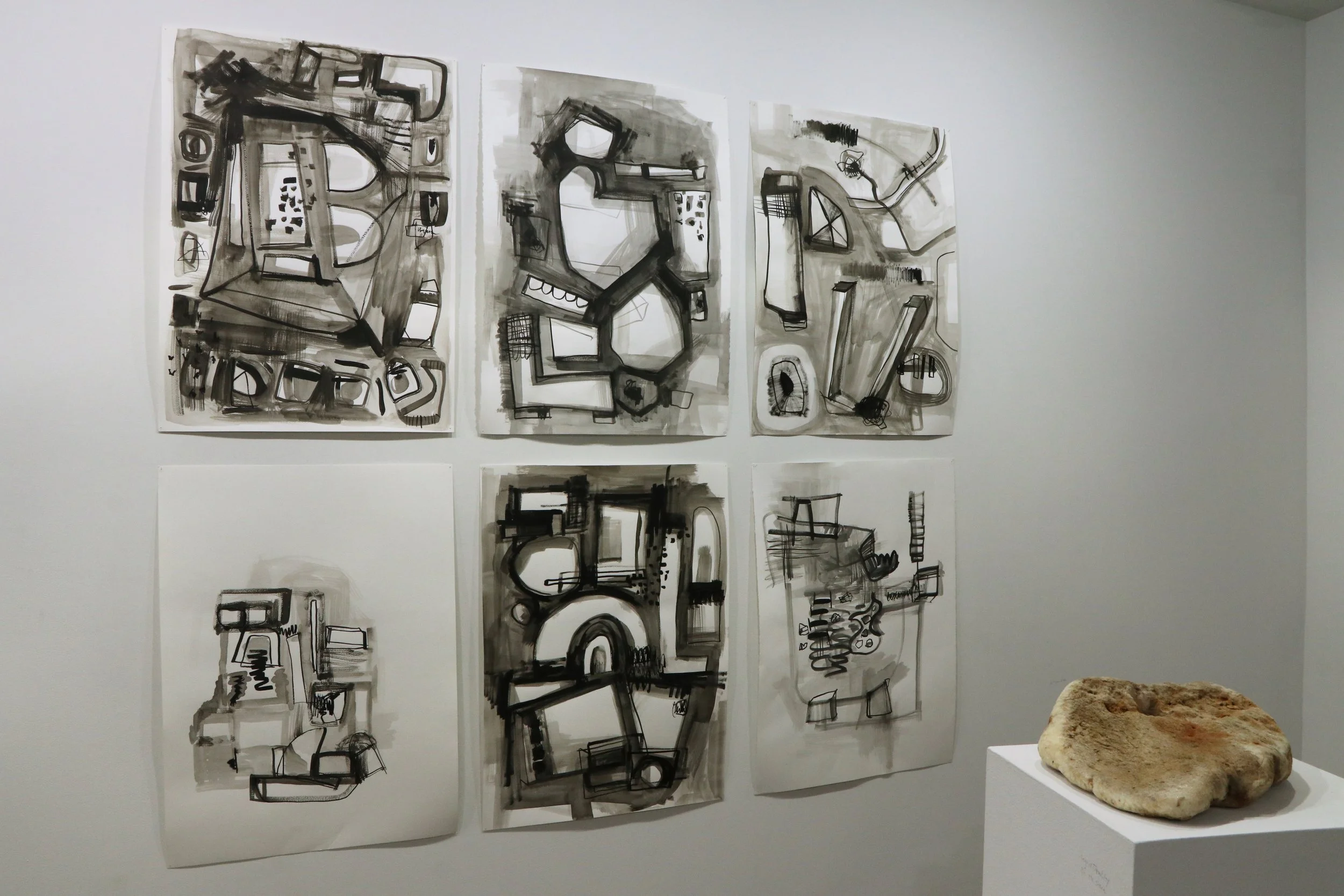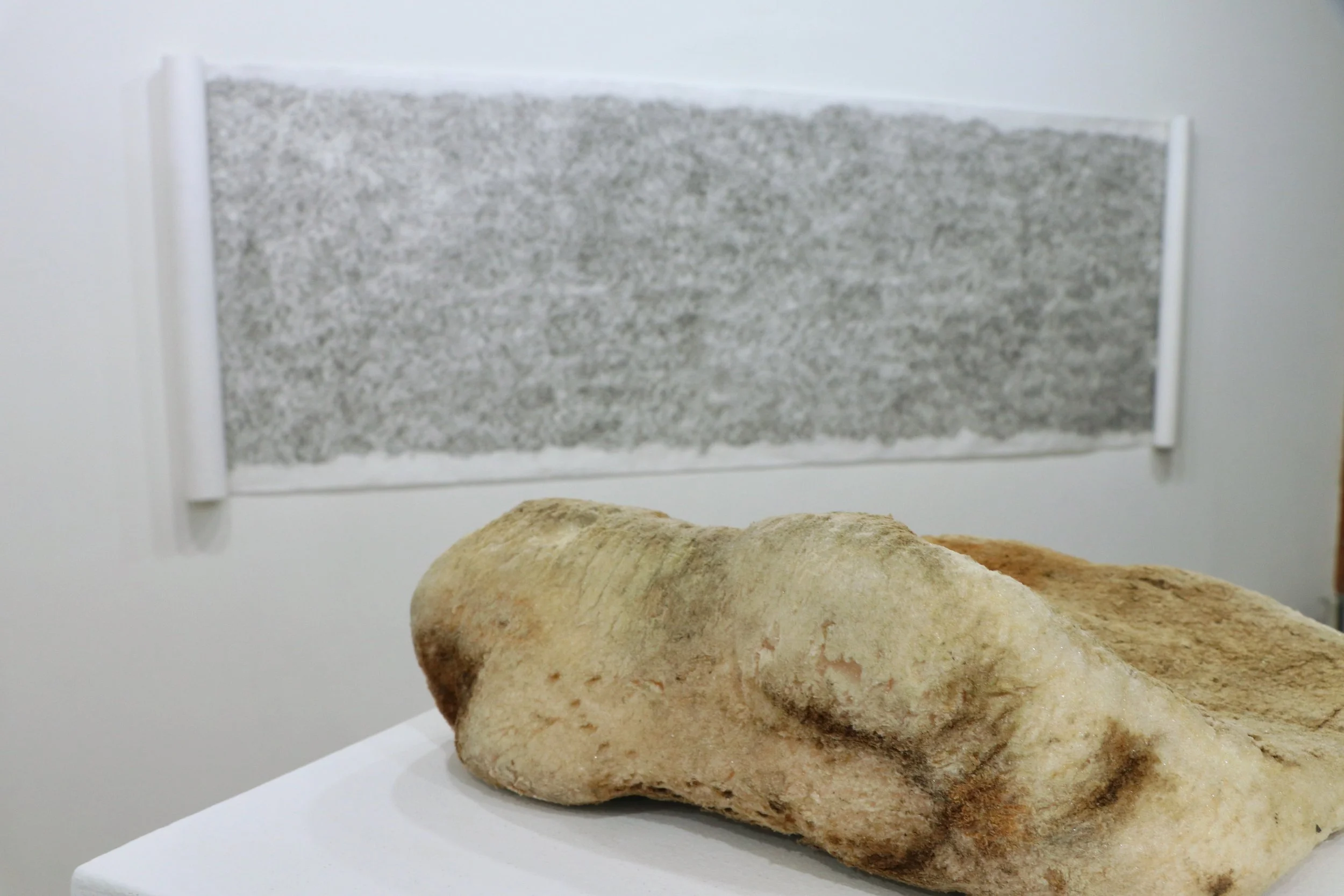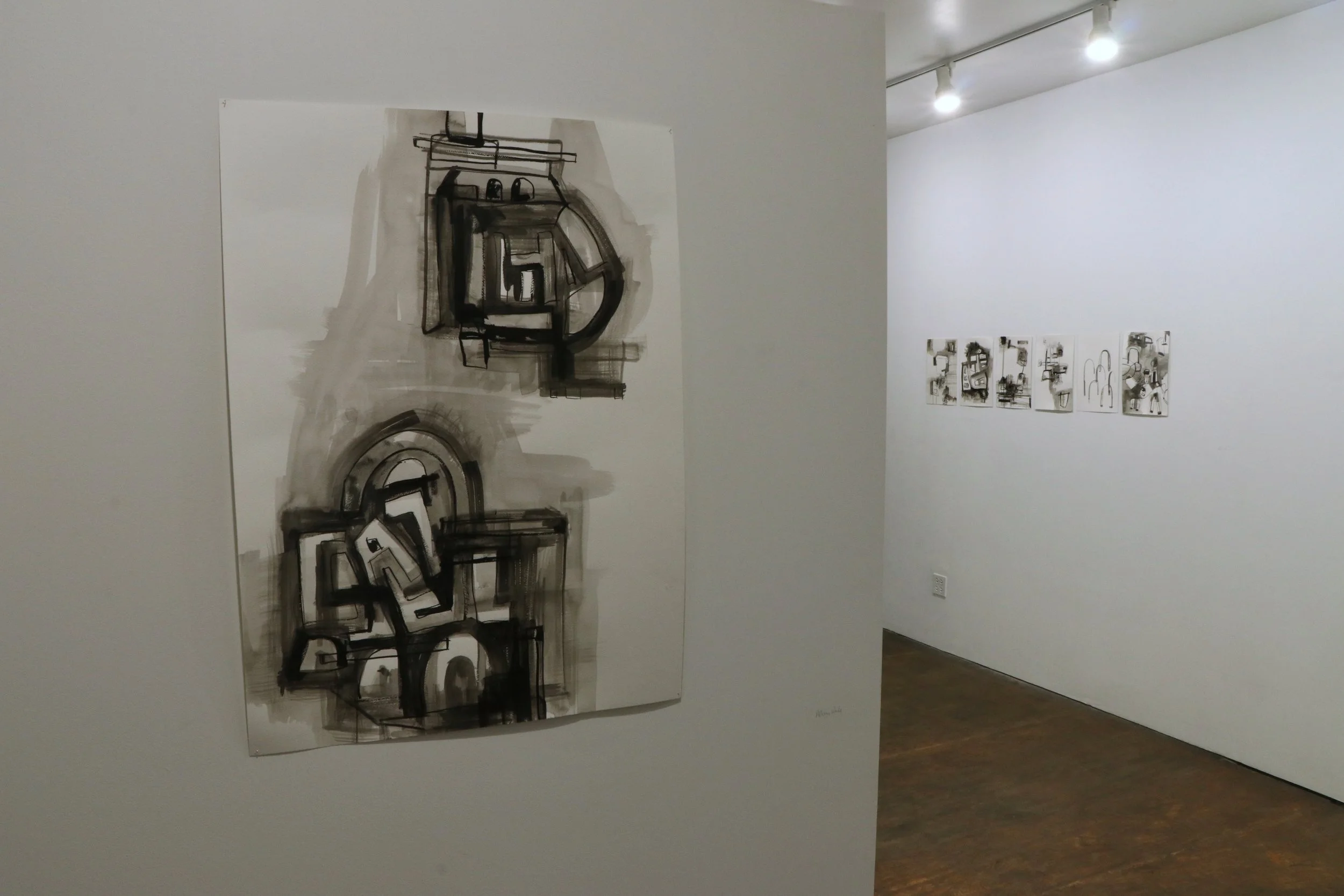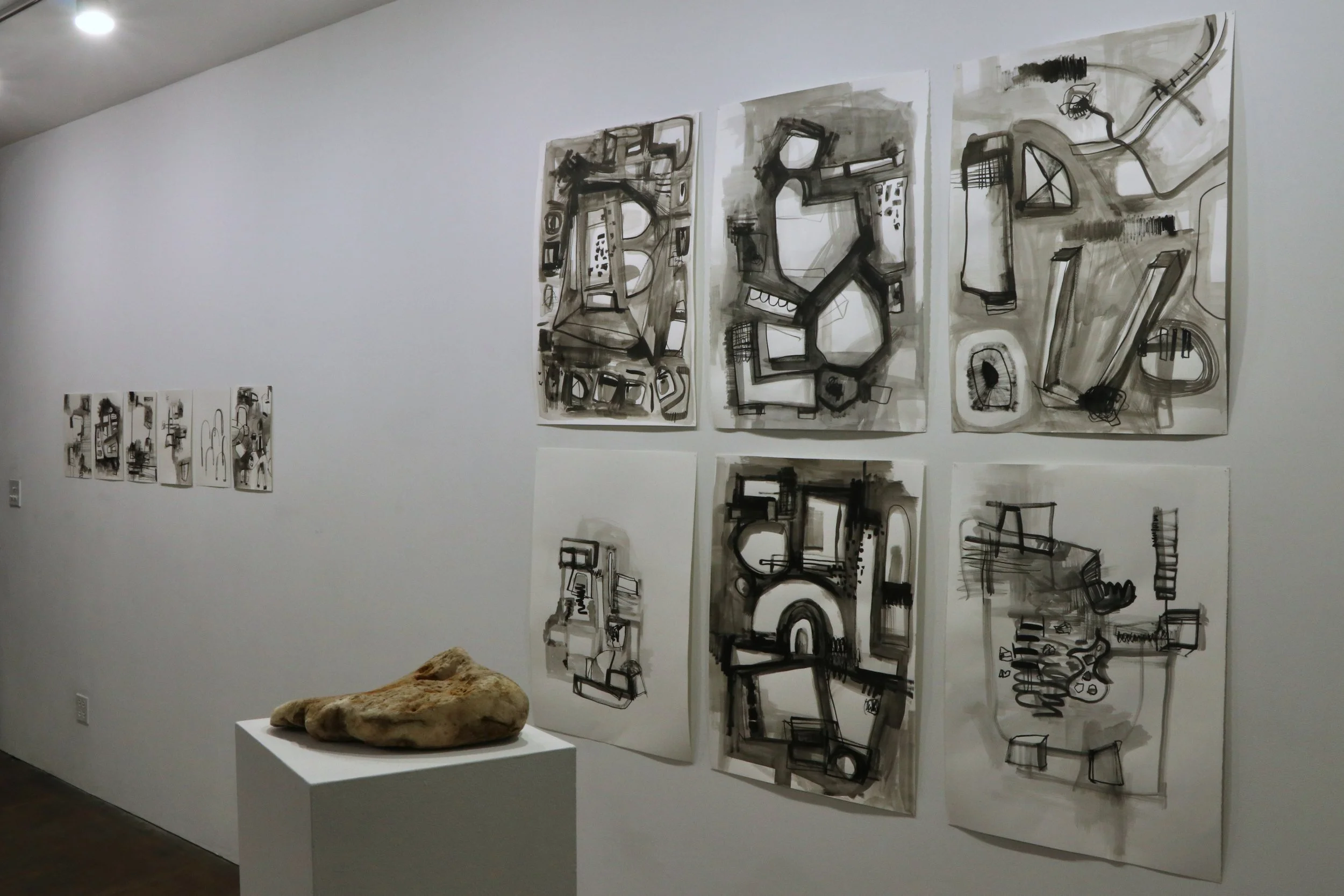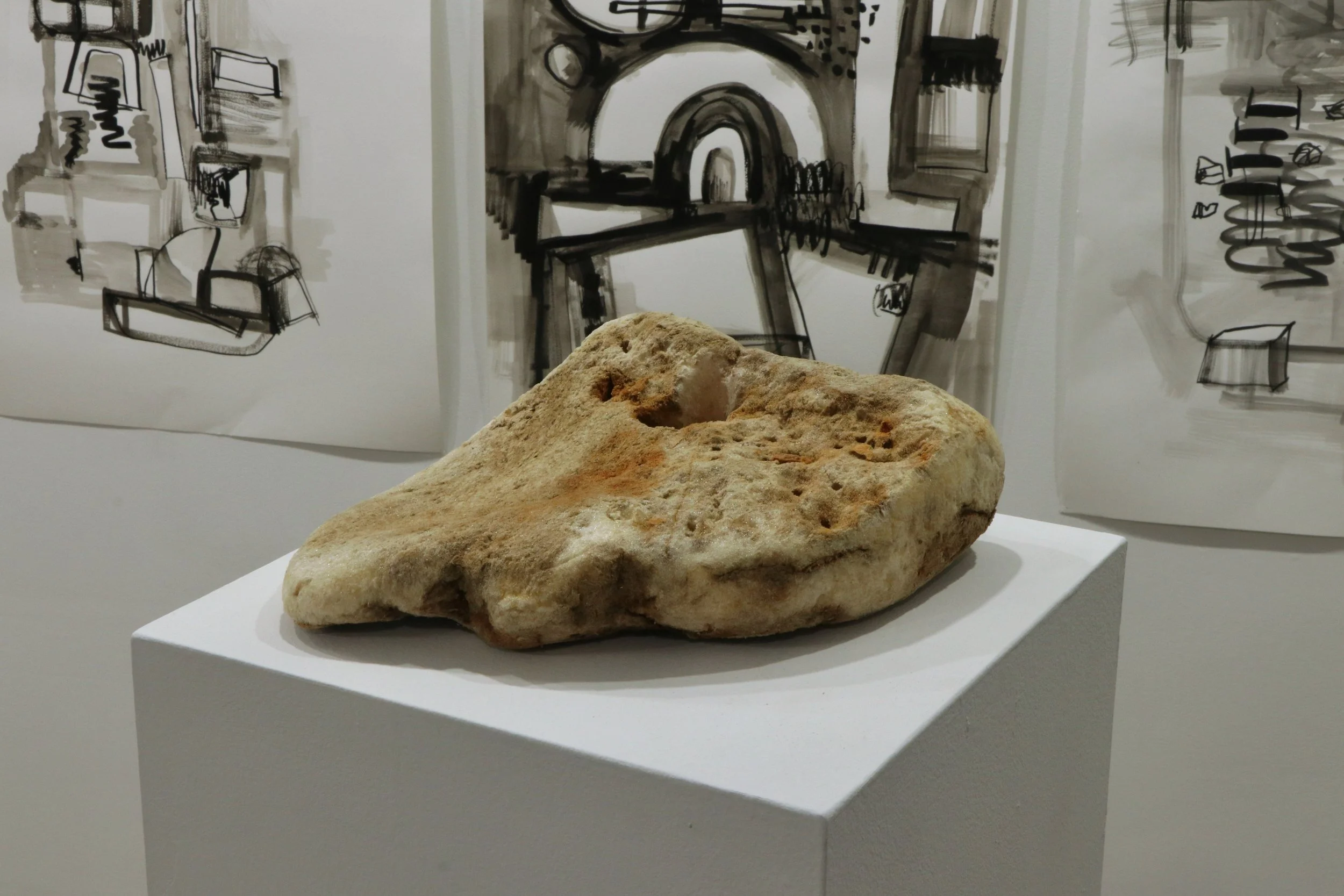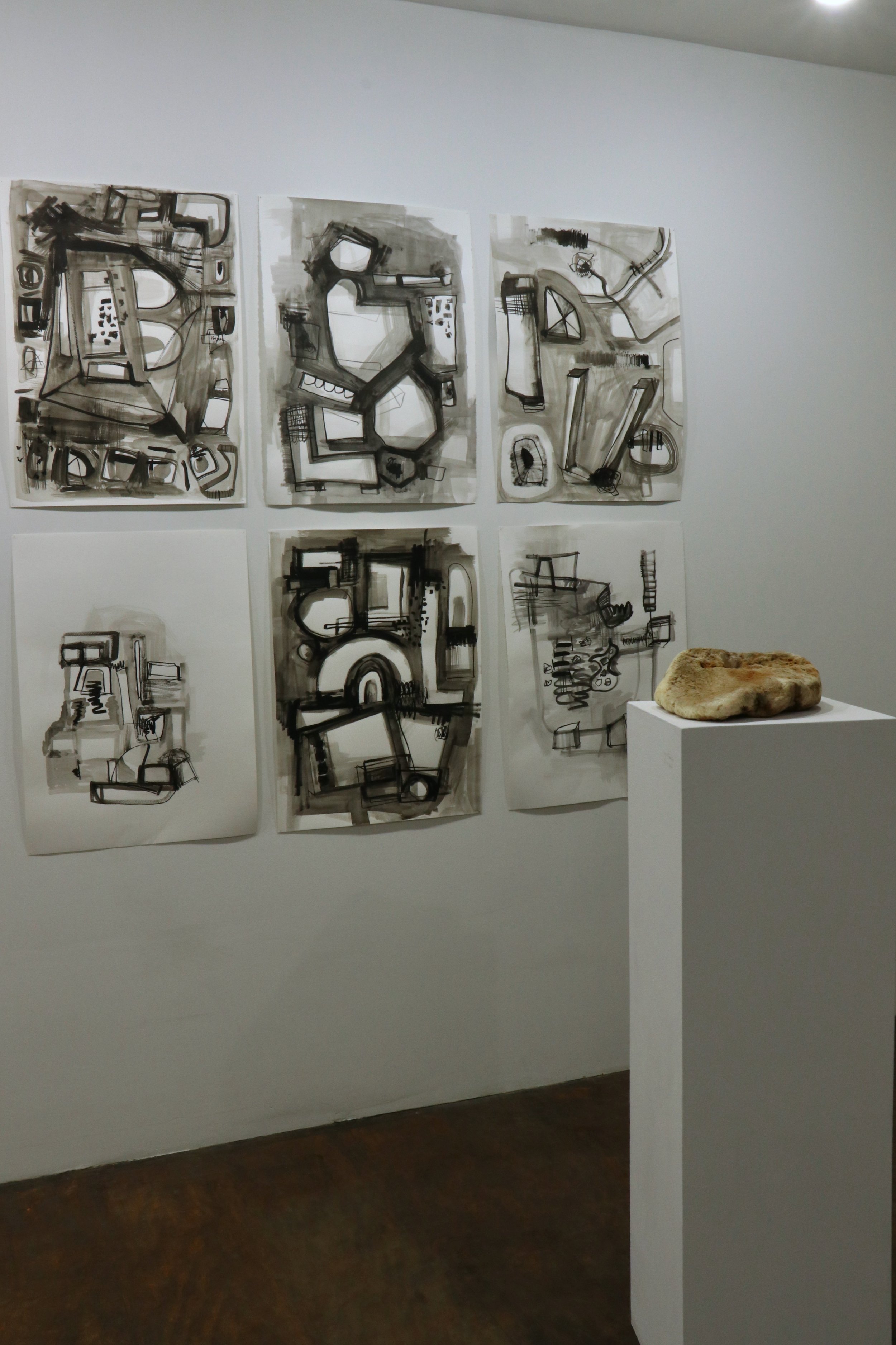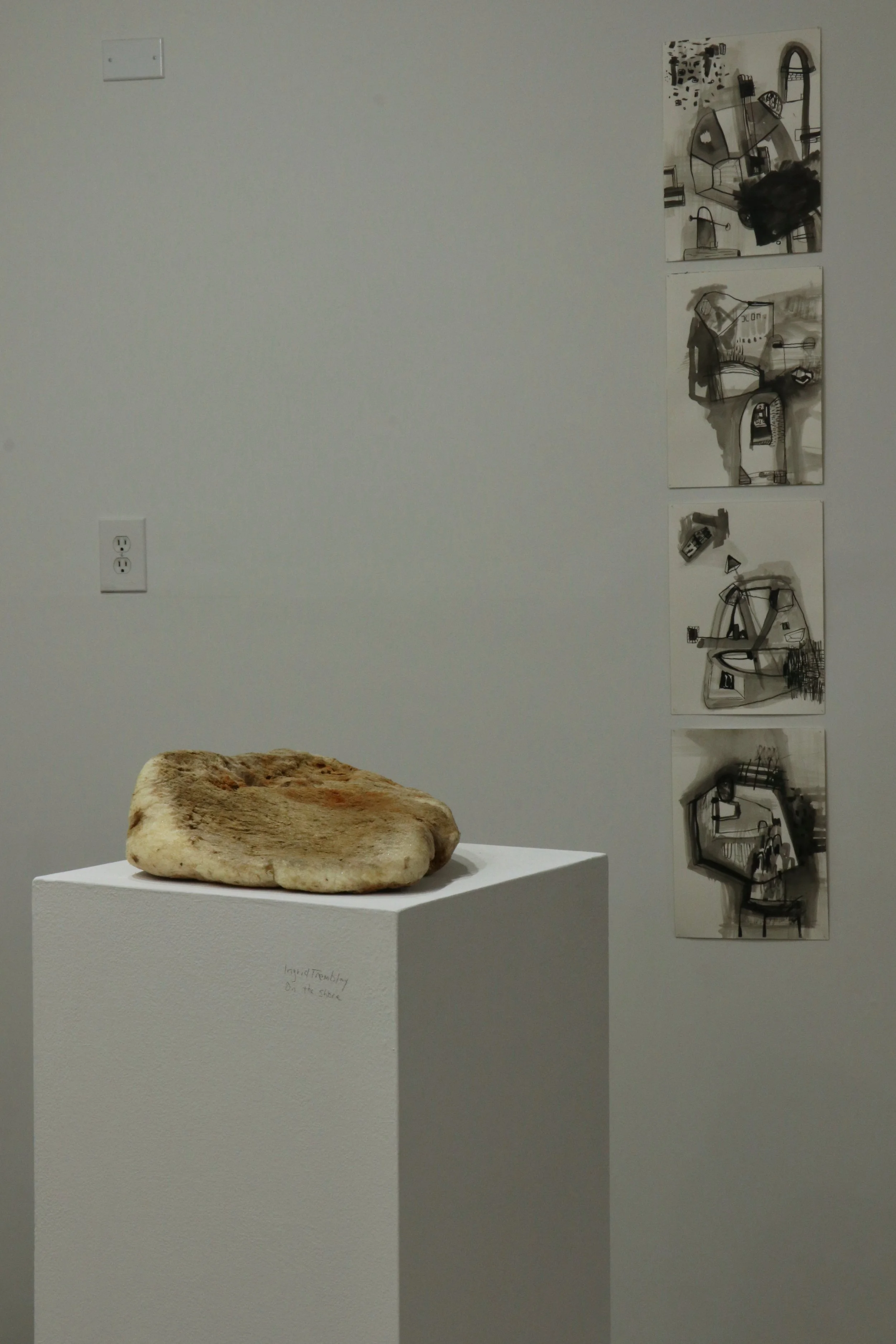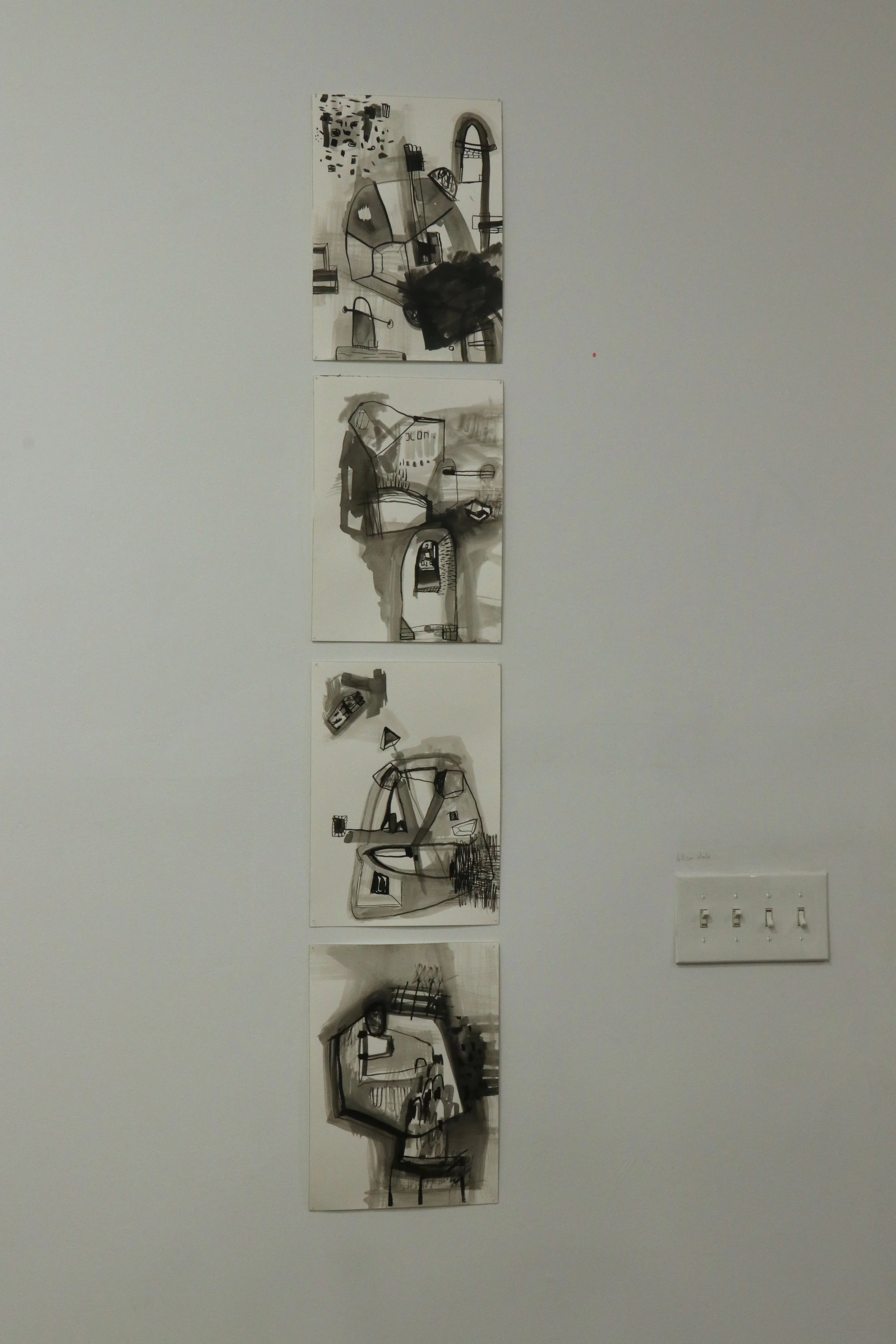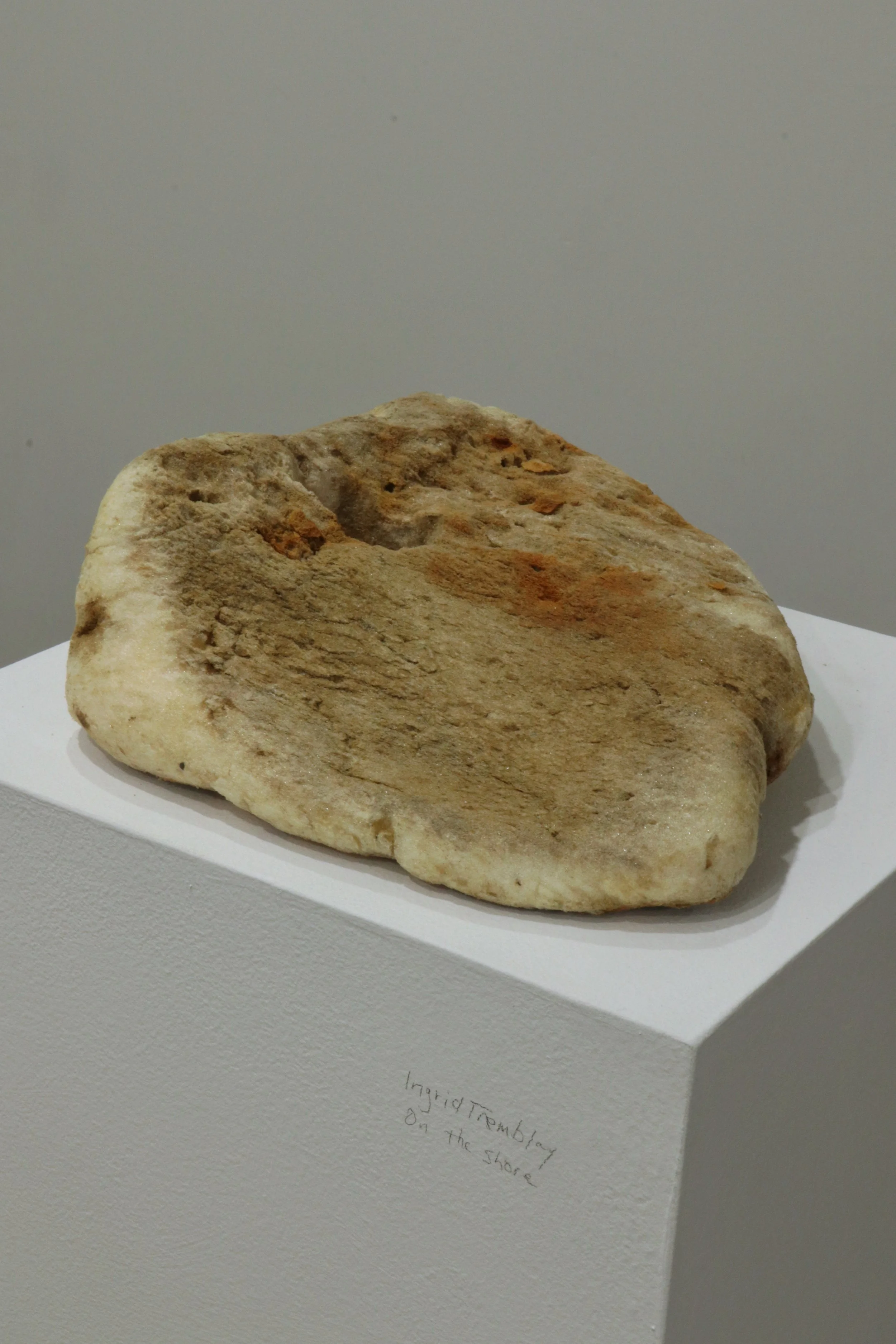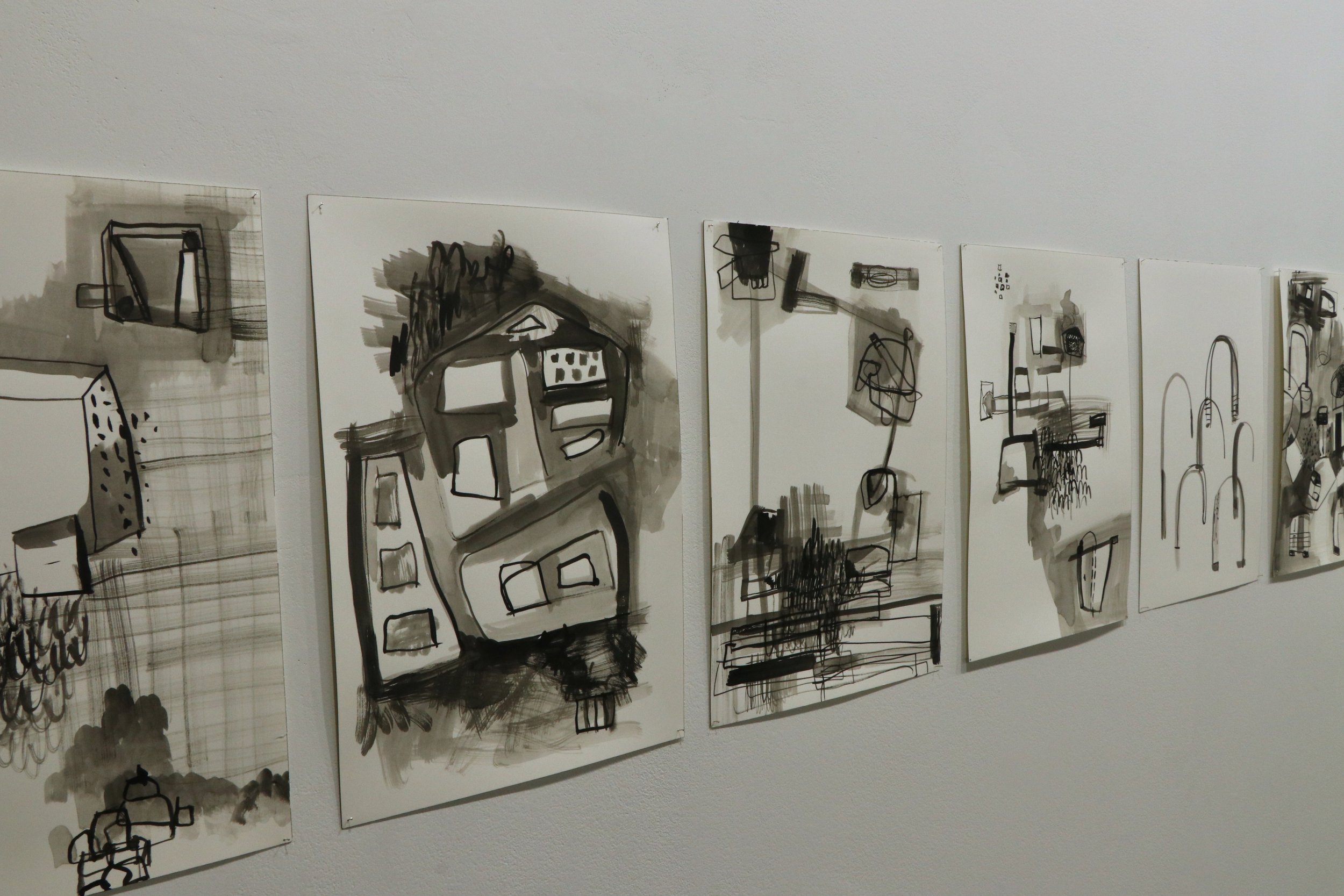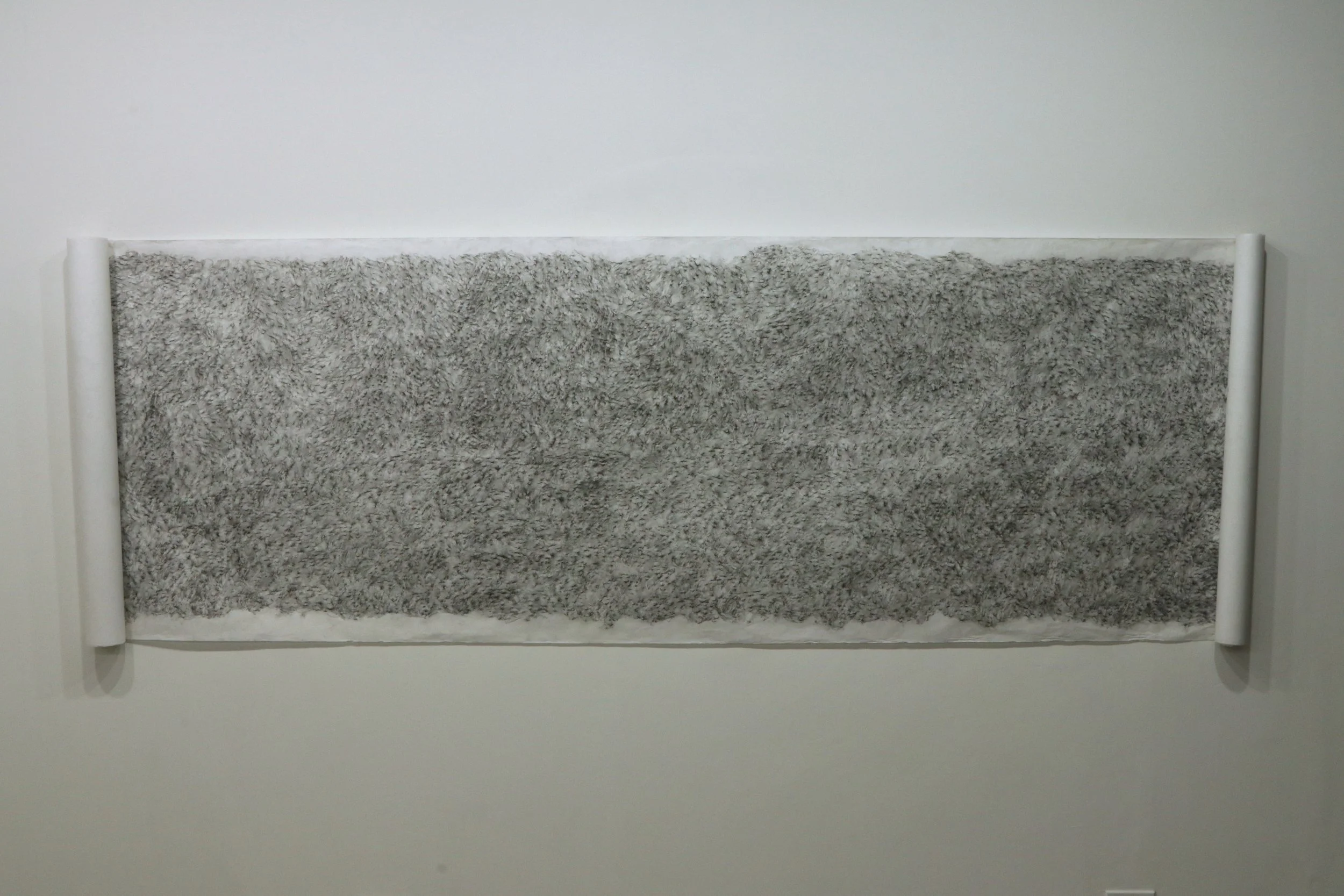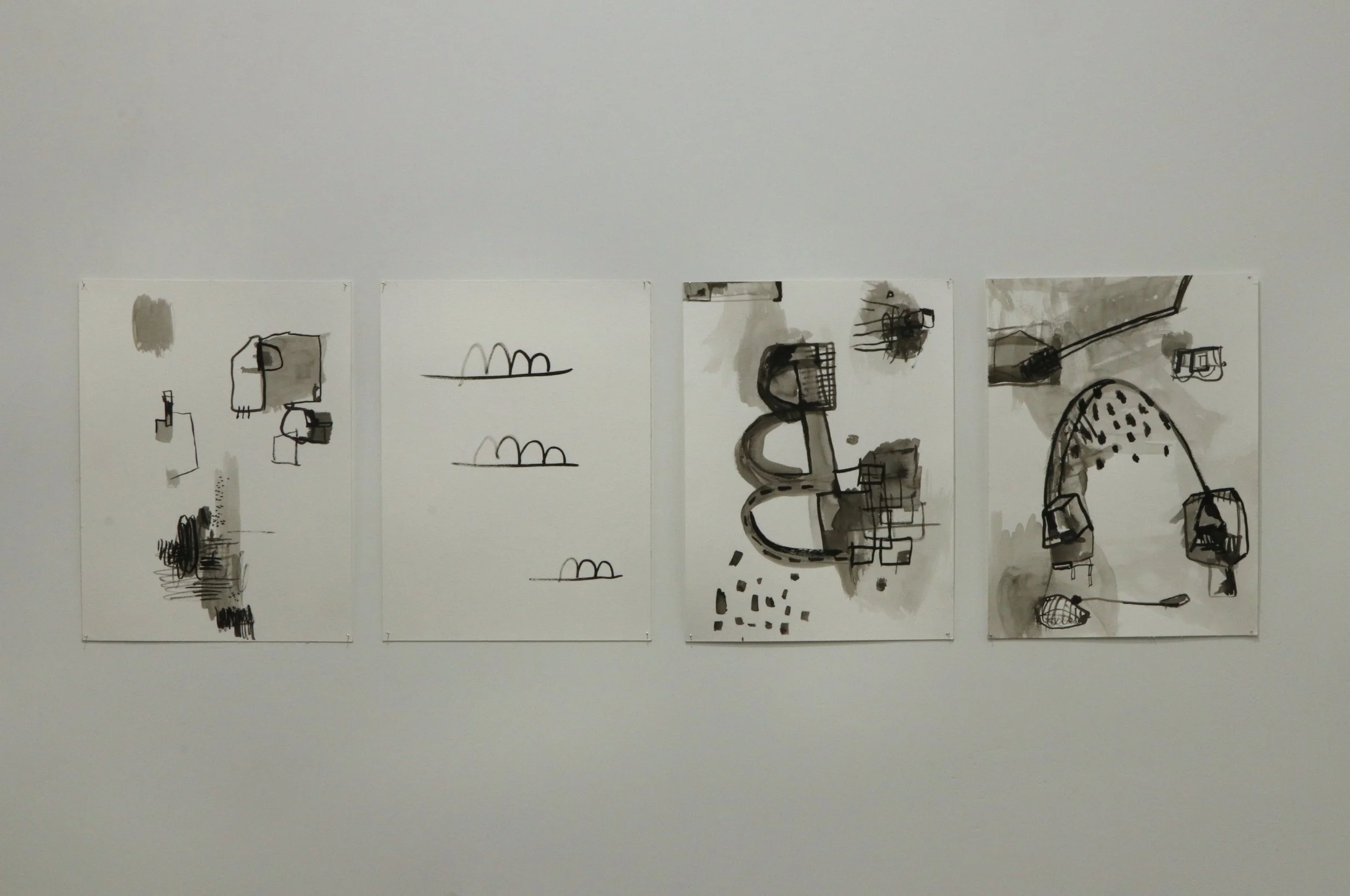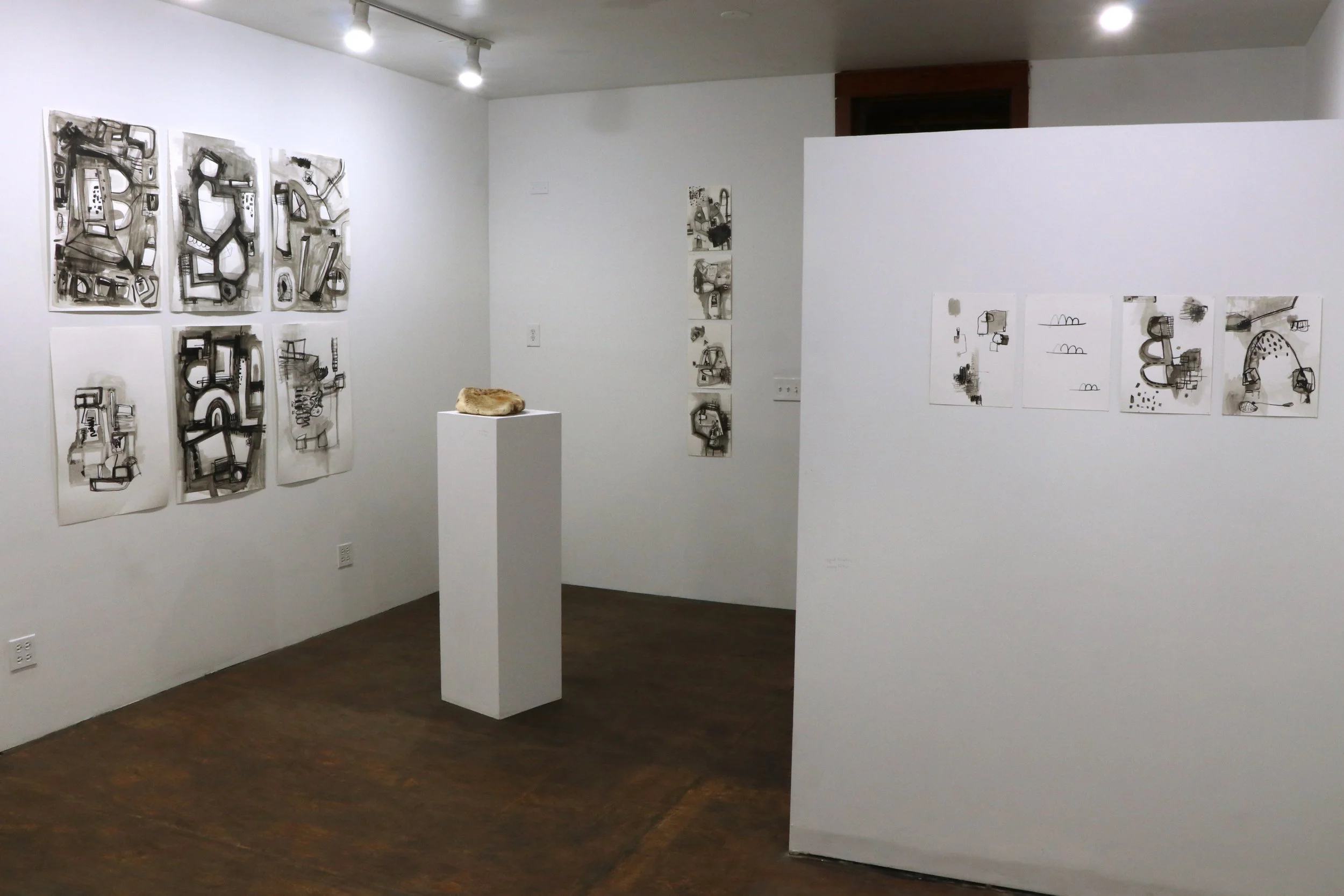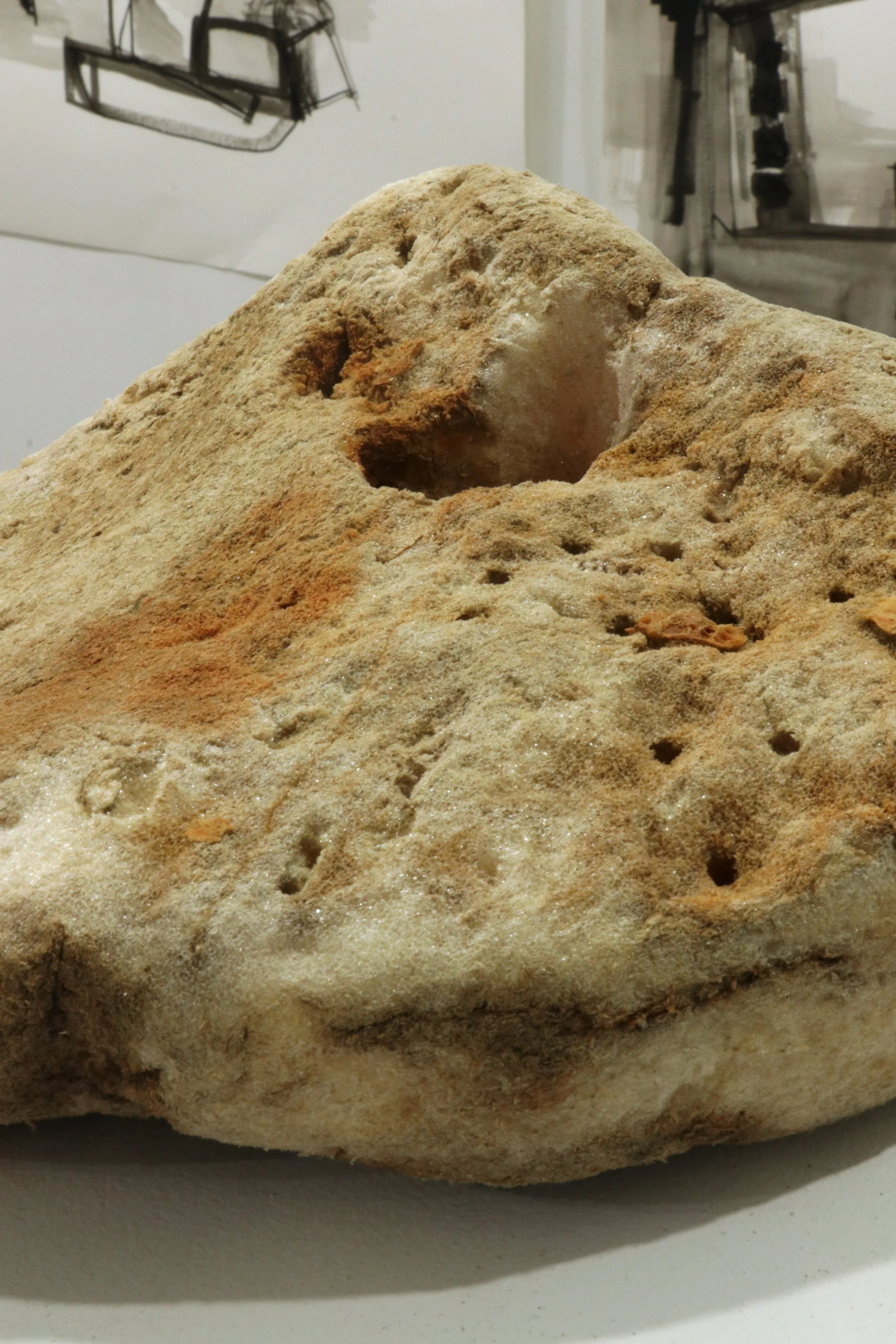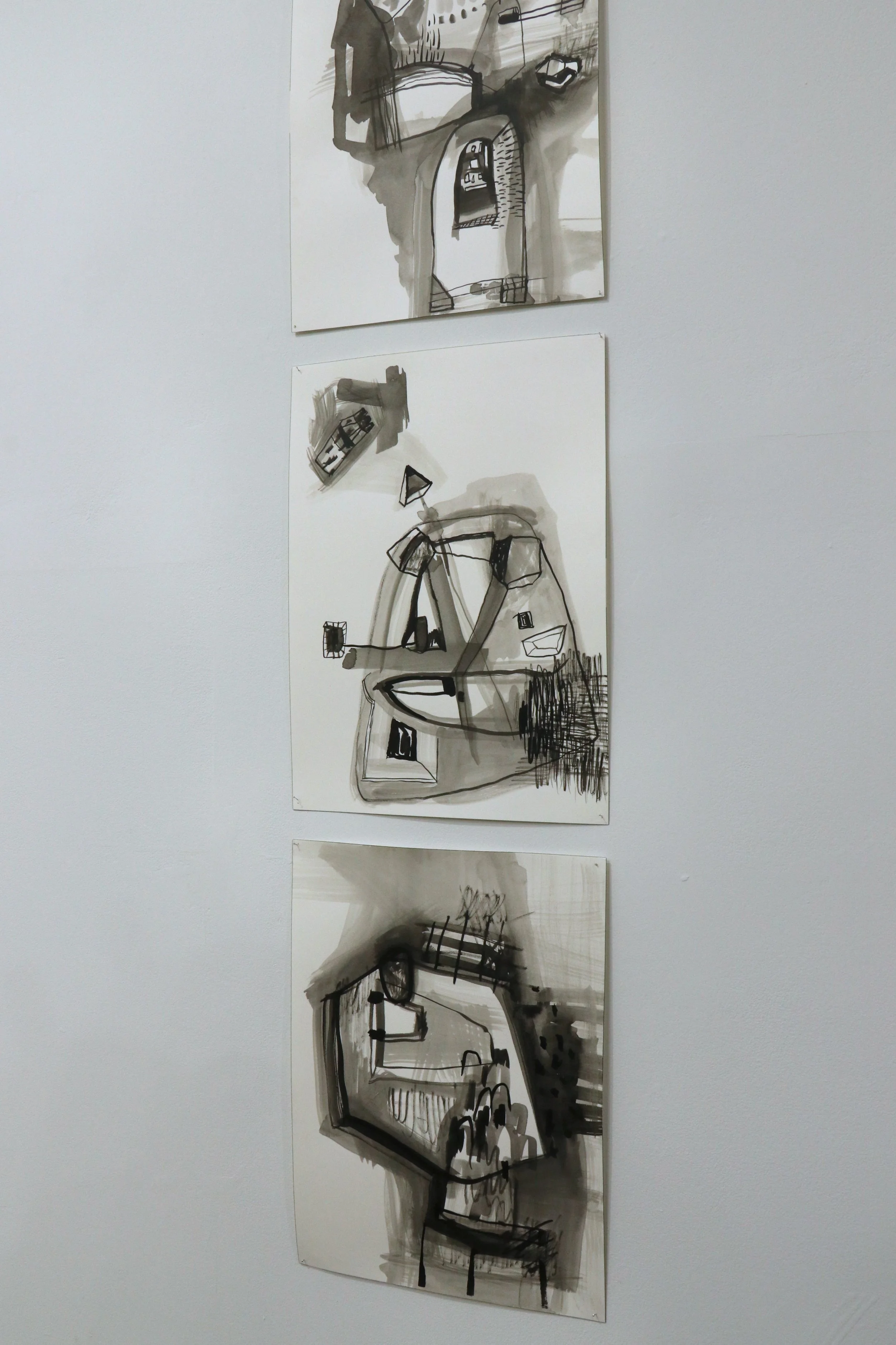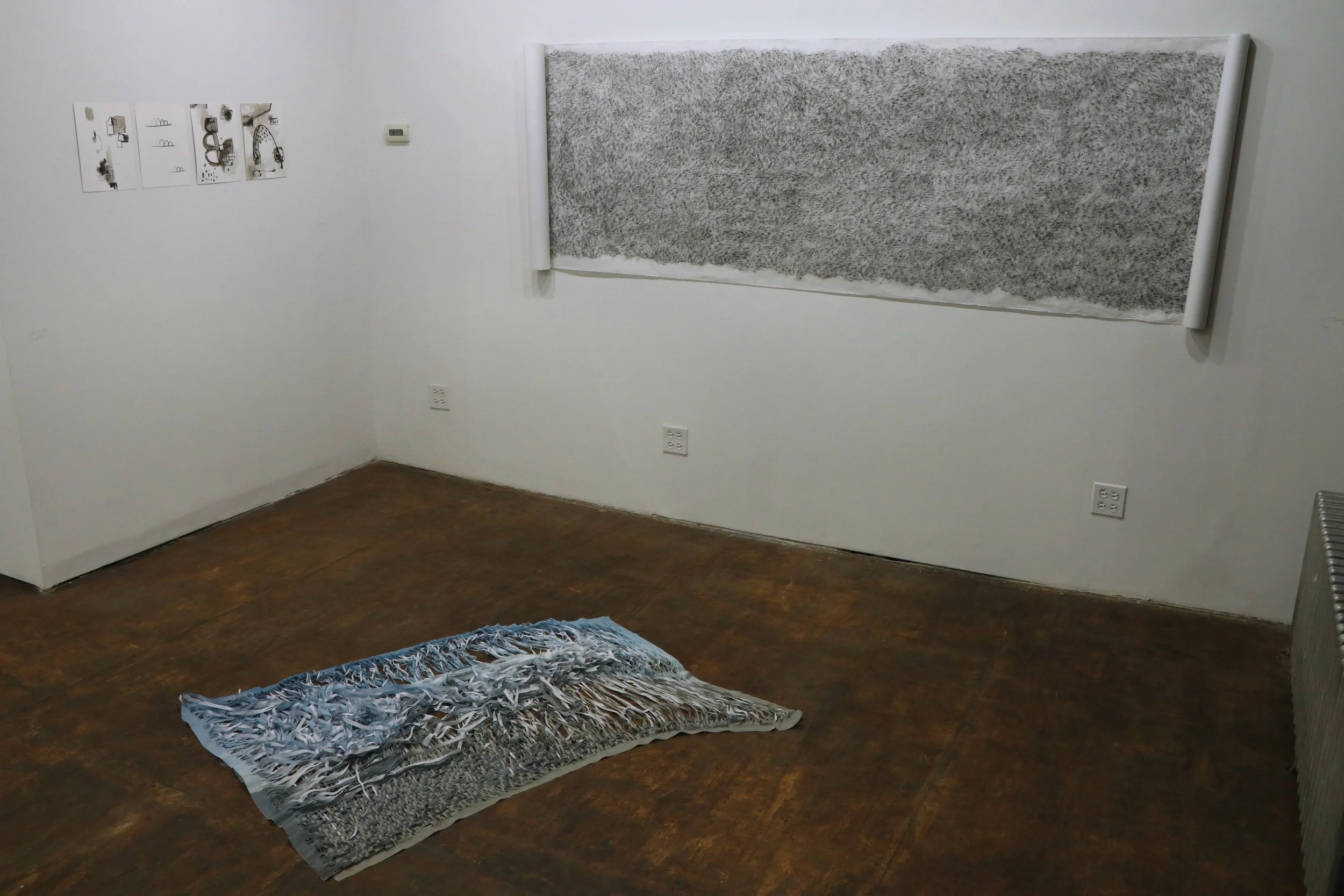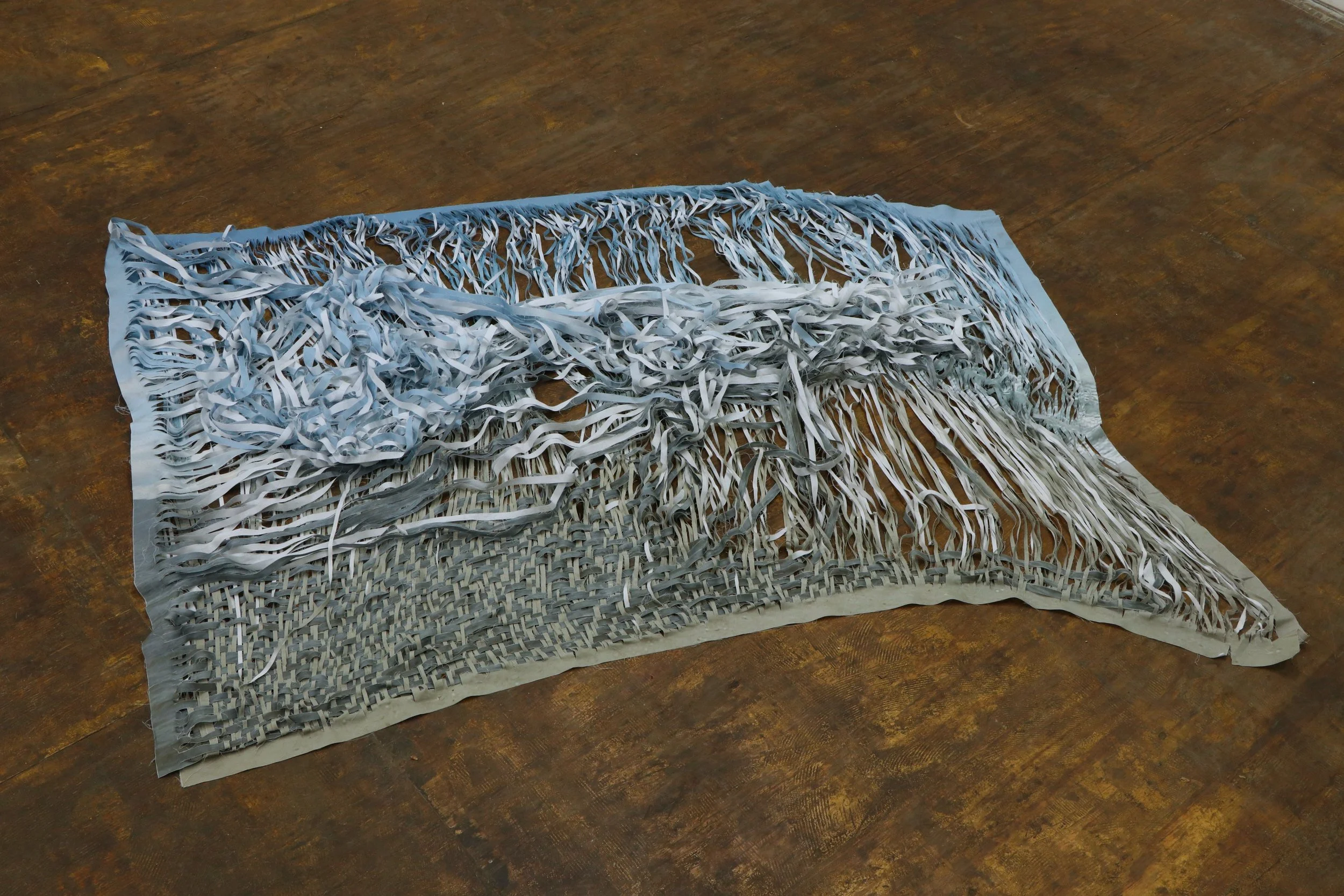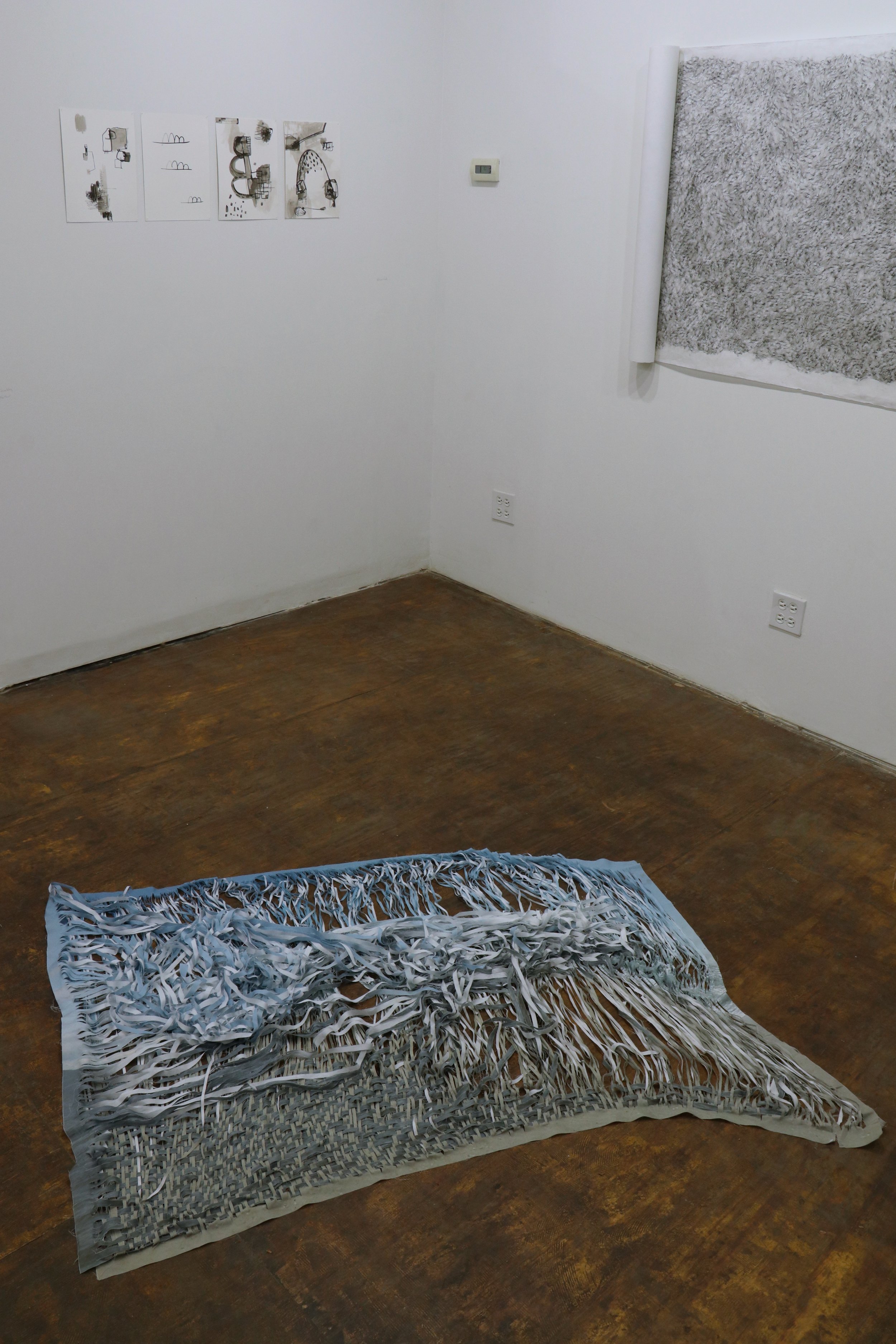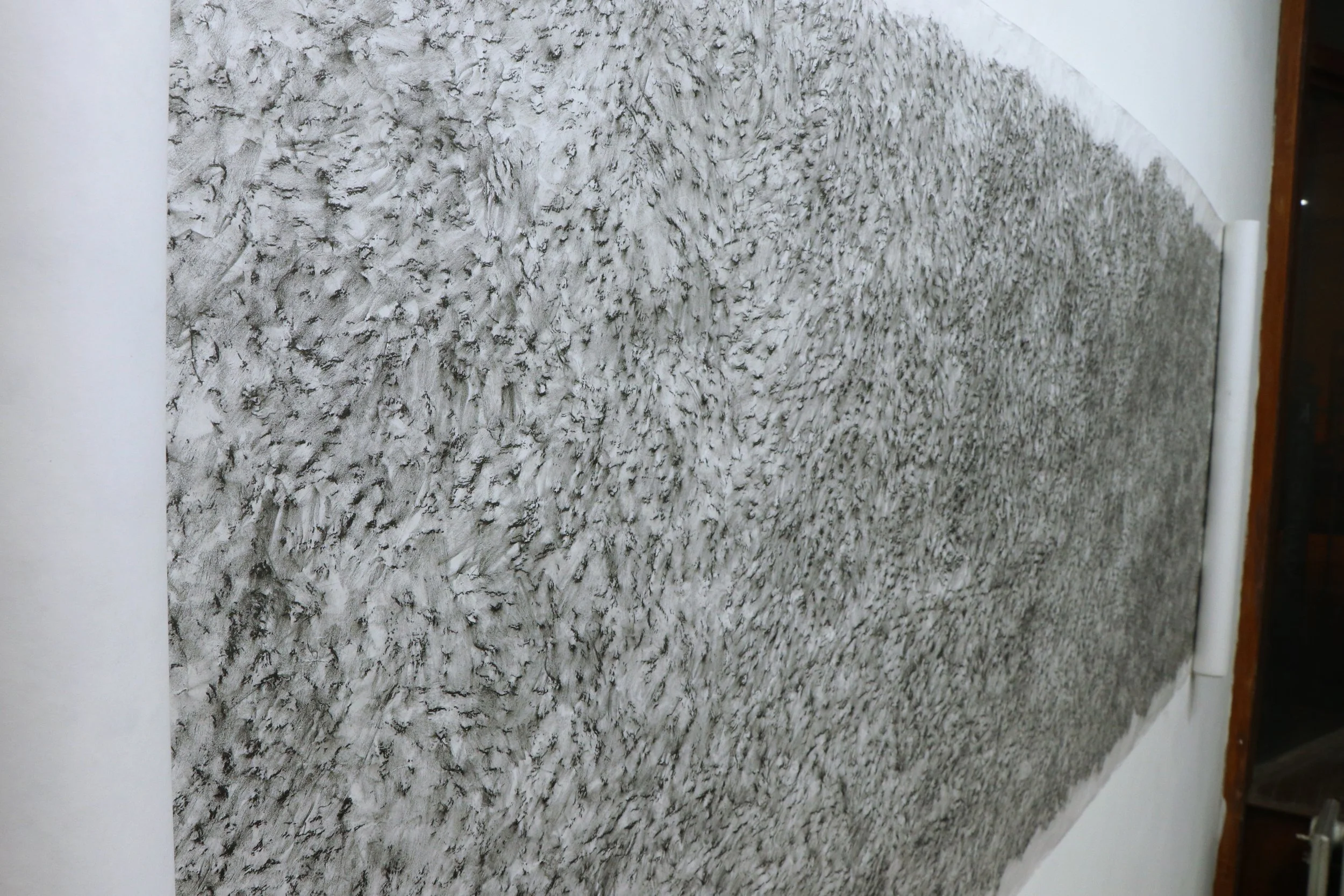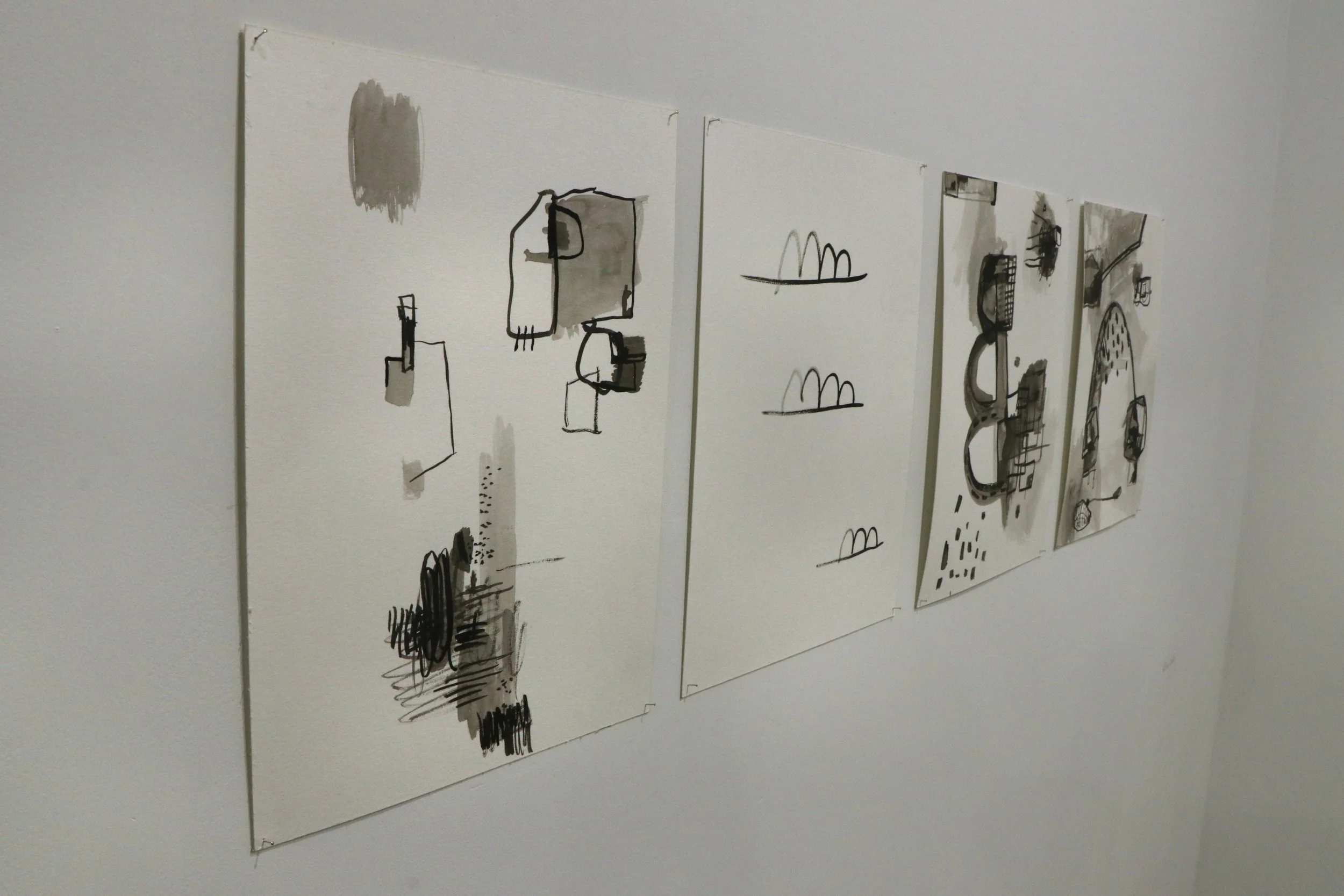Tumble
Tumble
Ingrid Tremblay, Allison Wade
March 4 - April 1, 2017
When I was a kid in the early seventies I saw a television version of the Little Mermaid where she ended up as sea foam. It was a euphemism for spiritual continuation after death. In reality there is a carcass or piece of trash roiling around that actually generates the foam. Scum. Maybe there is poetry in the word, but the material is a different encounter. Ingrid Tremblay found foam in the sea as different from sea foam as it is different from the mermaid. The trash kind of foam that once protected some precious commodity. Likely something electronic. She sees the foam take on the appearance of stone and finds herself wondering, will anything take on the appearance of stone if it tumbles long enough? Anything but a dead mermaid, apparently.
The plot line here is a jumble, but we can mine a series of compelling relationships if we follow the point of view. The foam started new and forward thinking, surrounding the latest gizmo. But the more it is called upon to act as protector, to absorb blow after blow, it has taken on many attributes of something ancient. It is always the substance in between. A stone becomes a few grains of sand. In its breaking it becomes a disappointing kind of more. Ingrid gathers a group of in betweens that end up having the grammar of a story, but not the story. Or not much of a story. In the art world we’ve passively agreed that transformation elevates and romanticizes, but Ingrid’s empty plot gets us to see the changes without mystical expectation. But neither is it degradation.
Allison Wade pays attention to the material profile as much as Ingrid, but there is even less story. Many of Allison’s objects stretch in this direction or that, often on the verge of toppling over. They waffle in the wind. Allison translates her objects into drawings. Or perhaps she draws to direct herself in the production of objects. The swoops and stains of ink are not nearly so tortured as that word study would have it seem. Nor do I get any sense that she is producing many sketch moments to shop for the good ones. More like seeing the architecture clearly by seeing the entire block where the building resides. The one we see first dwarfs the bit next door and shares an embellishment motif with the one near the corner. Of course they aren’t really like architecture, and maybe the rendered objects aren’t terribly like objects. She draws as a method for observing separate from sculpture as much as she does in setting herself up to make objects. The drawings visualize space. In wandering through and around the possible perspectives we begin to locate a point of view.

